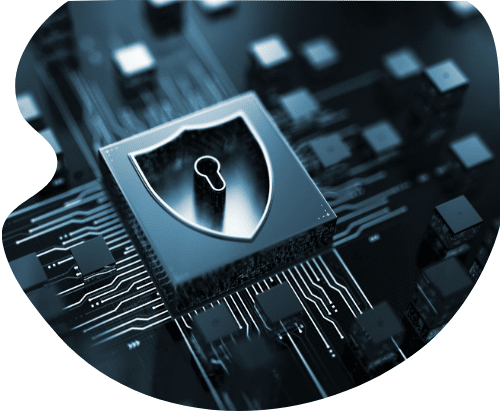The federal government spends more than $100 billion annually on IT services, much of it through contracts with private companies. That level of investment brings strict cybersecurity expectations, especially for contractors that handle government data.
Two frameworks frequently encountered in this space are the Cybersecurity Maturity Model Certification (CMMC) and the Federal Risk and Authorization Management Program (FedRAMP). Both programs share the same goal of protecting sensitive information. However, they serve slightly different purposes and apply to different types of vendors.
CMMC is designed for companies working with the Department of Defense, in particular for those that handle Controlled Unclassified Information (CUI). Over 100,000 companies are part of the Defense Industrial Base. Any of them that handle CUI will eventually need to meet CMMC Level 2 or 3.
Meanwhile, FedRAMP applies to cloud service providers working with civilian federal agencies. If you are a defense contractor, a SaaS provider, or if your organization supports both civilian and DoD programs, it’s important to understand how CMMC and FedRAMP compare.
This article outlines the main differences between CMMC and FedRAMP, including which types of organizations they apply to, the requirements of each framework, and how to handle certification.
Who Needs CMMC and Who Needs FedRAMP?
CMMC and FedRAMP apply to different groups of contractors and vendors based on two factors:
- The agencies they serve, and
- The type of data they handle.
In short, if you’re in the DoD supply chain, you may need to meet CMMC. If you’re a cloud provider for civilian agencies, you may need FedRAMP authorization. Some organizations may need to pursue both if they serve both sides of the government in these capacities.
Below is a non-exhaustive list of a few common types of companies to which CMMC would apply. Remember that CMMC applies to companies that do business with the Department of Defense (DoD) and process, store, or transmit Controlled Unclassified Information (CUI) or Federal Contract Information (FCI):
- Defense manufacturers that produce components for aircrafts, vehicles, or weapons systems.
- Managed IT providers that support DoD facilities or systems.
- Staffing firms placing personnel in DoD programs (that involve access to CUI).
- R&D firms involved in any military-related developments or prototypes under DoD contracts.
- SaaS companies providing support to DoD missions.
- …and more.
Basically, if a company touches DoD contract information in any way (and in particular if it involves CUI), it will most likely fall under CMMC.
FedRAMP, on the other hand, applies to cloud service providers that want to sell their platforms or applications to civilian federal agencies (non-DoD). The types of companies this would include are:
- SaaS, IaaS, and PaaS vendors offering cloud-based products to agencies like the Department of Energy, the Department of the Treasury, or the Environmental Protection Agency.
- Data analytics platforms with cloud infrastructure that hosts government data.
- Project management or HR platforms that are seeking to be used across multiple federal departments.
- File storage, communications, or productivity tools that may process or store government records.
- Software vendors selling through government marketplaces like FedRAMP.gov or GSA Advantage.
Security Requirements Compared
While CMMC and FedRAMP indeed share some overlap given their common goal to protect sensitive government data, they are built on different baseline requirements, and their approaches to security controls differ.
CMMC is based on the NIST SP 800-171 framework. It requires organizations to implement 110 security controls across 14 control families if they handle CUI and need to meet Level 2 certification. For organizations handling only FCI (Federal Contract Information), Level 1 requires 15 controls focused on basic security hygiene. CMMC’s overall requirements are structured around the following security considerations:
- Access control
- Incident response
- Configuration management
- Personnel and physical security
- System and communications protection (measures such as encryption and traffic monitoring).
Additionally, organizations must also produce documentation, including System Security Plans (SSPs) and Plans of Action and Milestones (POA&Ms), and be ready for assessment by a third-party assessment organization (C3PAO) at Level 2 or 3. Lastly, it’s important to note that CMMC 2.0 is not a point-in-time audit. Contractors are required to maintain compliance continuously. For Levels 2 and 3, assessment will lapse upon failure to annually affirm, according to the DoD’s CMMC Guidance.
FedRAMP, by contrast, is based largely on NIST SP 800-53 controls, which are a bit more complex in scope. A Moderate FedRAMP authorization requires over 300 controls across a wide range of domains, including:
- Continuous monitoring of systems and data.
- Incident response procedures and breach notification timelines.
- Risk assessment processes and security authorization packages.
- Documentation of how systems are interconnected/dependent on each other.
- Penetration testing and vulnerability scanning.
- Independent third-party assessments.
FedRAMP places more emphasis on supply chain risk management, cloud architecture documentation, and the remediation of vulnerabilities. Cloud service providers must show that they have a set of documents to pass the Joint Authorization Board or agency review.
Documentation and Assessment Differences To Be Aware Of: CMMC vs. FedRAMP
The goal of documentation for CMMC (at Level 2) is to show that your organization meets the 110 controls from NIST SP 800-171. This includes documentation of:
- How controls are being implemented, and the plan for how they will be maintained. This documentation is your System Security Plan (SSP).
- A Plan of Action and Milestones (POA&M) – A list of gaps and a plan for remediation, with specific steps.
- A list of policies and procedures, showing how your organization covers access control, incident response, configuration management, and other security controls.
- Evidence of implementation (such as user logs, training records, configuration screenshots, etc) also must be included in your documentation.
Finally, assessment is conducted by a C3PAO (Certified Third-Party Assessment Organization) for Level 2. Self-assessment is allowed at Level 1 (and in some cases, for Level 2), but must still be documented in SPRS (Supplier Performance Risk System) and affirmed by a senior official.
*It’s important to note that if you need CMMC Level 3, you will still need C3PAO affirmation completed on an annual basis, according to the DoD’s updated overview of CMMC. For CMMC Level 3, the ongoing C3PAO assessments are in addition to undergoing an assessment every 3 years by the Defense Contract Management Agency’s Defense Industrial Base Cybersecurity Assessment Center (DIBCAC).
FedRAMP documentation, meanwhile, is part of a full authorization package submitted to either a sponsoring agency or the Joint Authorization Board. Required documents include:
- System Security Plan (SSP) – this can often reach over 600 pages for Moderate-level systems!
- A Privacy Impact Assessment that identifies how personal data is being collected, used, and protected.
- A Continuous Monitoring Plan detailing how your organization will monitor system changes, incidents, and vulnerabilities.
- An Incident Response Plan, showing how incidents will be reported and handled.
- Documentation showing how system changes are approved and tracked (also known as a Configuration Management Plan).
Assessment is carried out by a third-party assessment organization that has been recognized by the FedRAMP PMO (Program Management Office). FedRAMP requires ongoing authorization maintenance, which takes the form of monthly vulnerability scans, incident reporting, and annual reassessments.
How Certification Works: CMMC vs. FedRAMP
CMMC 2.0 certification is tied to a company’s eligibility for Department of Defense contracts. Depending on the sensitivity of the data involved, contractors must meet either Level 1 (self-assessed) Level 2 (typically third-party assessed) requirements, or Level 3 (third-party assessed). As discussed in greater detail in the previous sections, the process entails the following steps:
The first step is to conduct an internal NIST 800-171 gap assessment to compare where you are versus where you need to be. The next step is to document your System Security Plan and Plan of Action and Milestones, followed by finally engaging a certified third-party assessment organization (for Level 2 and 3).
There is no central approval body, and certification is granted per contract, with the assessment scope being based on the environment that contains CUI.
FedRAMP follows a centralized authorization process managed by the FedRAMP Program Management Office. There are two paths:
- Agency Authorization. For this option, a single agency sponsors the cloud service provider and reviews the authorization package.
- Joint Authorization Board. Authorization via a Joint Authorization Board (which comprises the DHS, GSA, and the DoD) involves a higher bar of scrutiny.
For the FedRAMP process, your organization will work with a Third-Party Assessment Organization to complete your Security Assessment Plan and Security Assessment Report. You’ll then need to submit a full authorization package through FedRAMP’s secure repository, and finally, undergo ongoing monitoring after approval.
Can You Be Compliant With Both?
The short answer is yes.
If your organization provides cloud-based services to civilian agencies and works with the Department of Defense, you likely need to comply with both FedRAMP and CMMC. For example, a SaaS company that supports DoD contracts involving CUI will need CMMC Level 2, and if the same product is then sold to a civilian agency (like the Department of Energy), they will also need FedRAMP authorization.
CMMC and FedRAMP share foundational requirements from NIST standards. But it’s not a direct map on – meeting FedRAMP Moderate, for instance, doesn’t automatically mean you meet CMMC Level 2. The good news is it absolutely does reduce duplication in areas such as access control, system monitoring, and incident response.
If you do need both CMMC and FedRAMP, figuring out early on how to align both compliance efforts can reduce cost and headaches down the road. This is a common use case for working with a consultant to manage both tracks. A consultant has the experience implementing these requirements across a large spectrum of different types of organizations, and can help ensure efficient implementation.
When To Bring In A Consultant Or MSSP
A recent report by the U.S. Government Accountability Office shows that many small businesses in the defense industry lack the internal resources to implement NIST 800-171 without outside help. This illustrates a growing need for CMMC consultants and MSSPs.
In the report, many smaller businesses in particular expressed concerns about the costs and resources required for CMMC implementation. This is where outsourcing the process can be transformative. Outsourcing is a fraction of the investment that building out an in-house team to carry out the implementation process would be.
The fact is that organizations often wait too long to bring in help, and this can lead to missed deadlines and unnecessary rework. If you’re pursuing CMMC, FedRAMP, or both, bringing in a consultant early can reduce risk and cost.
It can be a good idea to bring in a consultant or MSSP if you don’t have internal staff with experience in NIST 800-171 or 800-53 implementation, if you’re unsure how to scope your CUI, if you’re being asked to respond to a security questionnaire and aren’t confident in your answers, or if you need to align your environment for both frameworks.
A consultant will perform a gap analysis, build a compliance roadmap, draft documentation for you, implement technical controls, and fully prepare your team for assessment. For small and mid-sized organizations, especially those with aggressive go-to-market timelines, outsourcing to a qualified team helps avoid delays and prevents compliance from blocking growth.
About Rhymetec
Our mission is to make cutting-edge cybersecurity available to SaaS companies and startups. We’ve worked with hundreds of companies to provide practical security solutions tailored to their needs, enabling them to be secure and compliant while balancing security with budget. We enable our clients to outsource the complexity of security and focus on what really matters – their business. Contact us today to get started.




